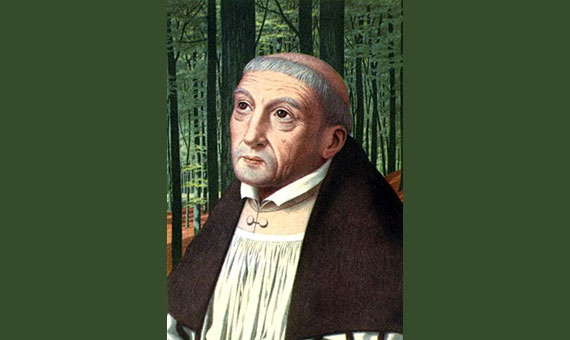Azadi ka Amrit Mahotsav Kolkata event honours four Clergymen
Pope Francis asks businesses to support working women: They’re ‘afraid to get pregnant’
Study: Christianity may lose majority, plurality status in U.S. by 2070
Indian politician declines Magsaysay Award under party pressure
Like John Paul II, Pope Francis heads to Kazakhstan during time of war

Flemish Mystic, Ruysbroeck was educated at Brussels and was ordained priest in 1317. He served as priest until 1343 and then withdrew to a hermitage with two others. The number gradually grew and a community of Augustinian Canons was formed in 1350 where Ruysbroeck was prior till his death. It became the centre of prominent religious movements like the Devotio Moderna and the Brethren of the Common Life which produced such prominent personalities like Gerhard Groote, Thomas a Kempis, etc. He wrote several works, all of them in his native language, Middle Dutch, but soon they all were translated into various languages and became very popular and still endure in influence. But his own generation he influenced less by his writings than by his saintly life. One of the most popular works, The Sparkling Stone (also known as The Treasure of Perfection of the Sons of God) reaches, according to Evelyn Underhill, one of the prominent mystics of the 20th century, “the high water mark of mystical literature.”
It was written around 1350 and takes its title from Revelation 2:17: “To him that overcomes I will give a white stone, and on the white stone is written a new name that no one knows except the one who receives it.” According to Ruysbroeck, the stone is Jesus Christ. It is but a pebble, round and smooth, which we tread on without noticing what we are doing; but to those who are able to receive it, the stone is white and shining, an irradiation of the glory of God, a flawless mirror in which all things are alive. Allegorically its roundness signifies that truth has no beginning and no end; its smoothness that truth is equitable; its slightness that truth is immaterial. The new name written on it attests to the individual’s life-achievement. The book, in fact, has but little to say about the stone, being concerned instead with what one must do to be worthy of receiving it. Everyone who would live in the most perfect state of Holy Church must, according to Ruysbroeck, fulfil three conditions: he must be a good and zealous man; an inward and spiritual man and an uplifted and God-seeing man. In ascetical literature these are often spoken of as the three stages of perfection: the beginner, the proficient and the perfect. Just as there are stages on the way toward union with God, there are also stages leading in the opposite direction, five in number. First are the slothful, who live for pleasure and for worldly gain. Next below these are the irresolute. A third class are the heretics and infidels. The fourth are the overtly godless who hold all spiritual life fraudulent and who live only for material gains. The farthest from God are the hypocrites. Ruysbroeck’s theology is simple: every person determines his or her own destiny. Every sinner is inwardly called to union with God, and if he listens to God, grace will flow forth and give him discernment and strength.
The most splendid part of the book is his description of the mystical union where the self is said to be melted into the fathomless abyss and enfolded in love and he describes this stage as the “God-seeing man.” The powers of the spirit are idled and in its idleness the spirit is flooded with Light. And this light is nothing but a fathomless staring and seeing. Our life and our being are uplifted into simplicity and made one with the Truth which is God. The vision ends as abruptly as it begins. When we try to comprehend what has happened to us, we fall back into reason and into ordinariness. The book was written for those who live in the spirit, to encourage them when they grow weary in their spiritual labours, but also to warn them against presuming that they have attained union with God. Another interesting point he makes is that the one who has achieved the mystical experience must share the blessings that he has received with others. They must always spend themselves on those who have need of them. He must become a willing instrument of God and thus Ruysbroeck lifts mysticism to a practical realm, which was his special gift.
Isaac Padinjarekuttu
(Professor of Church History
at Oriens Theological College, Shillong)
Leave a Comment